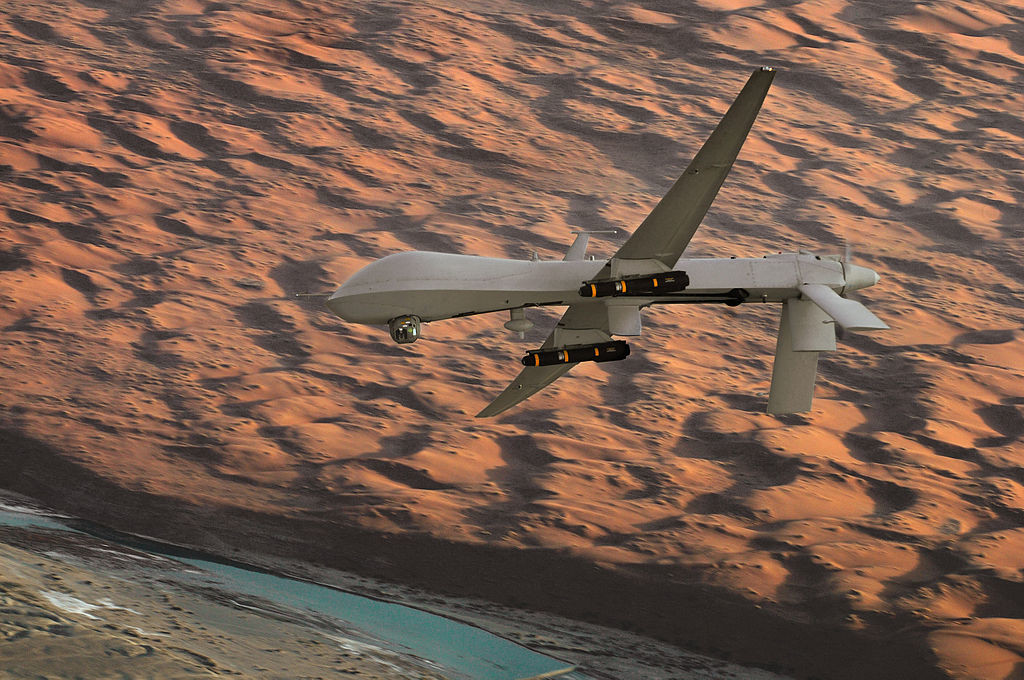Autonomy Whether You Like It or Not

Whether opponents realize it or not, weapon autonomy — to include the choice to kill — will win, and in some cases has already won, the drone debate. The false wall in the public’s understanding between “drones” and existing weapons is publicly cracking. Before long, military necessity will take over. In fact, it already has.
Two words from the headlines, “suicide drone,” show the contrived division of drones from existing military technology and the futility of counter-autonomy ethical arguments. Also called “kamikaze drones,” these weapons broadly surfaced in the public eye during Iran’s December 2014 Straits exercise, where they revealed the “innovation” of mass deploying “suicide-ized” Yasir drones.
These drones, however, are only a military innovation to people who have never heard of missiles. The press just slapped a word, “drone,” onto Manual Control Line-of-Sight weapons that reach as far back as Nazi anti-air weapons in 1943 or mass-produced Soviet anti-tank missiles from the 1960’s. In fact, the armed Predator, the public face of drones, was originally conceived to fill a perceived cruise missile capability gap after a 2000 failure to strike Osama Bin Laden. The cycle has come full circle – from cruise missiles, to missiles mounted on drones, to drones becoming the missiles they replaced.
So, what kind of autonomy do we allow missiles to have? The parlance of “fire and forget” is familiar from any number of TV shows and movies. The AGM-88 HARM (anti-radar missile) can be launched from dozens of miles away, seek out, and autonomously destroy an active radar. The Harpoon and new Naval Strike Missile would be used in a similar fashion, seeking targets autonomously in designated areas over the horizon. DOD Directive 3000.9 defines autonomous weapons as “a weapon system that, once activated, can select and engage targets without further intervention by a human operator.” It would appear that autonomous weapons are already here — some people just don’t like the new “drone” branding.
Continental Europe faced a similar dilemma in 1096 when Pope Urban II banned the use of a then-disruptive military technology: the crossbow. “Traditional” bows were still permitted, but some traditionalist authorities disliked how crossbows enabled easy employment of such deadly force. Our opposition to drone autonomy is much the same. We have already decided that autonomous systems are ethical — just as medieval Europe permitted normal bows. Then, as now, we have applied a flimsy ethical distinction to an evolution of technology whose military necessity will ultimately prevail. Pope Urban II’s sanction did not slow the proliferation of crossbows in Europe, and drone autonomy is coming whether we like it or not. Just ask South Korea’s Super aEgis 2 autonomous turrets.
What should be heartening to autonomy opponents is that the drone autonomy we fear will often be more ethical than the autonomy we have now. It is not the blind autonomy of “seek and destroy,” but a full round of discernment with any number of sensors before a kill decision is even considered. There will be places and scenarios where autonomous drones are incompatible or their capabilities less reliable, but so it goes for any weapon system. In conventional fights, such as air and blue-water sea battles, autonomous drones are merely advanced missiles with pieces that return for reuse.
In more complicated scenarios with insurgency or electromagnetic denial, humans are forced into close fights for the designation and destruction of targets. Leaders will make hard calls to save warfighter lives or meet objectives — calls that risk the start of conflict (first mover advantage), risk further force casualties, or risk collateral damage. The autonomy, expendability, and standoff distance inherent to autonomous weapons allow leaders to mitigate human risk and extend the time for its evaluation. This time and security allow commanders to be more careful and more prudent in the deployment of force.
One man’s killer robot empowered to destroy is another man’s merciful missile empowered to disengage. We should retain some fear of what autonomy brings; the power of advanced weapons systems should be respected. However, as the military presses technology’s logical development and development strategies like the third offset, we cannot allow war’s terribleness to make us blind to the future. Live by the sword, die by the gun; autonomy needs to be embraced, whether we like it or not.
Matthew Hipple is a U.S. Navy Surface Warfare Officer. A Graduate from Georgetown University’s School of Foreign Service, he is Director of Online Content for the Center for International Maritime Security — where he hosts the Sea Control Podcast. The venn diagram sections of “his opinions” and “official representation of the U.S. Navy, Department of Defense, or Government,” do not intersect. Follow him on twitter: @AmericaHipple

